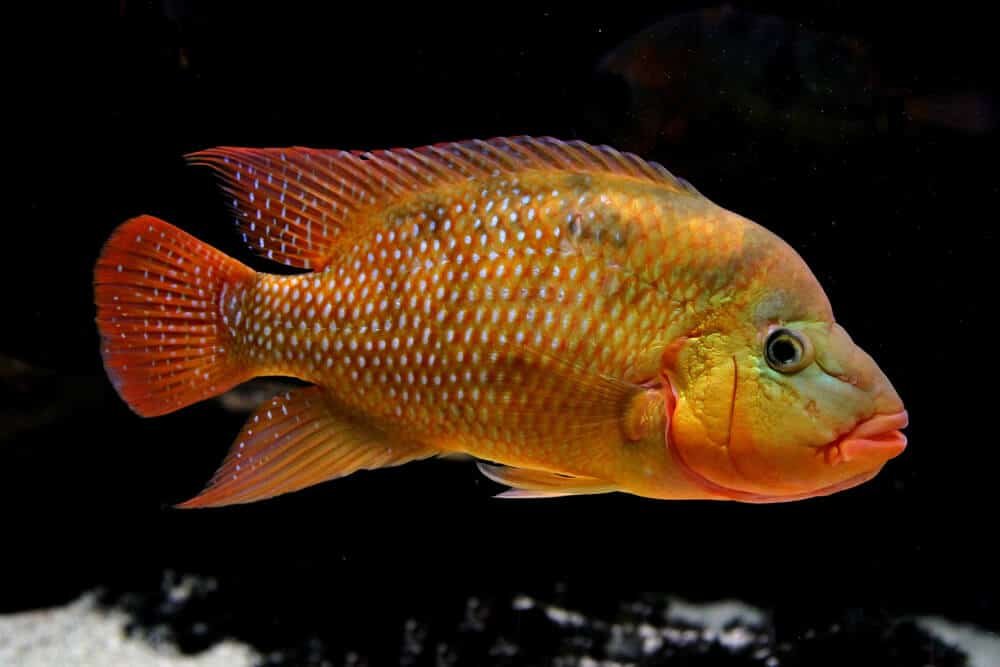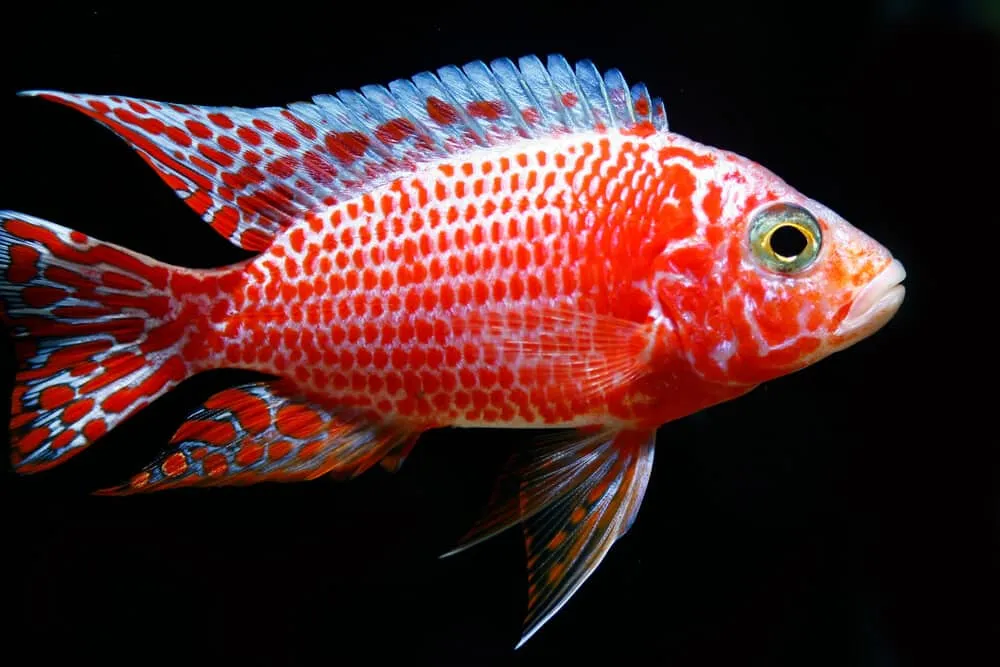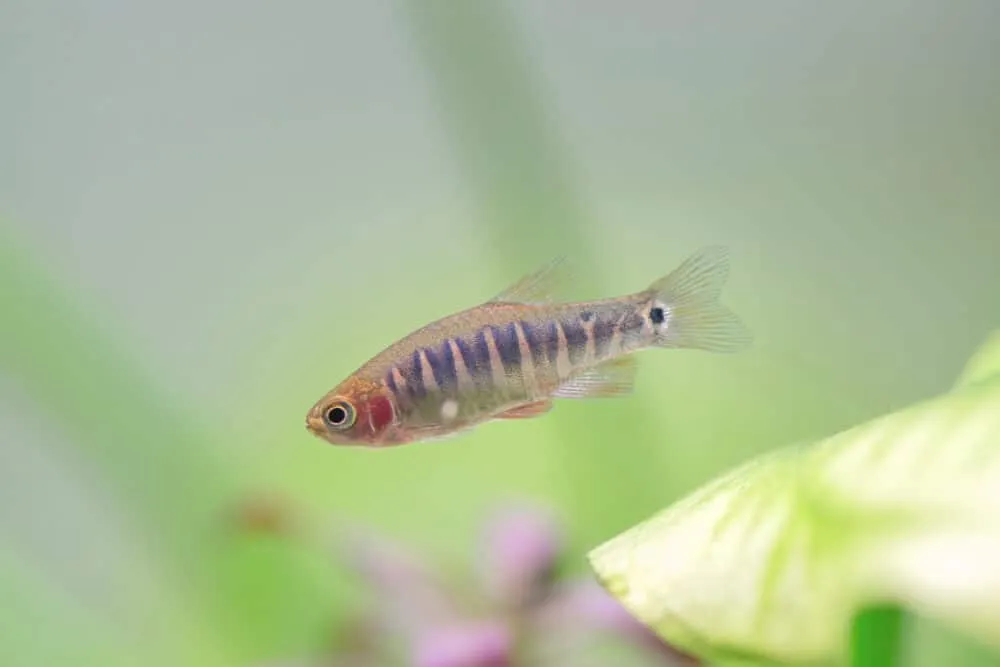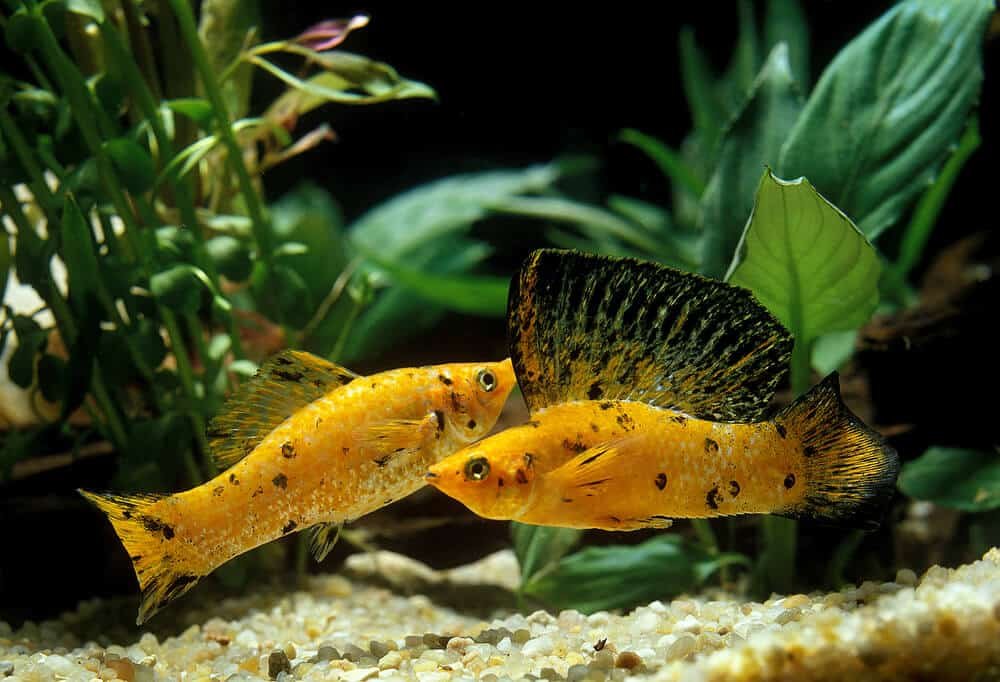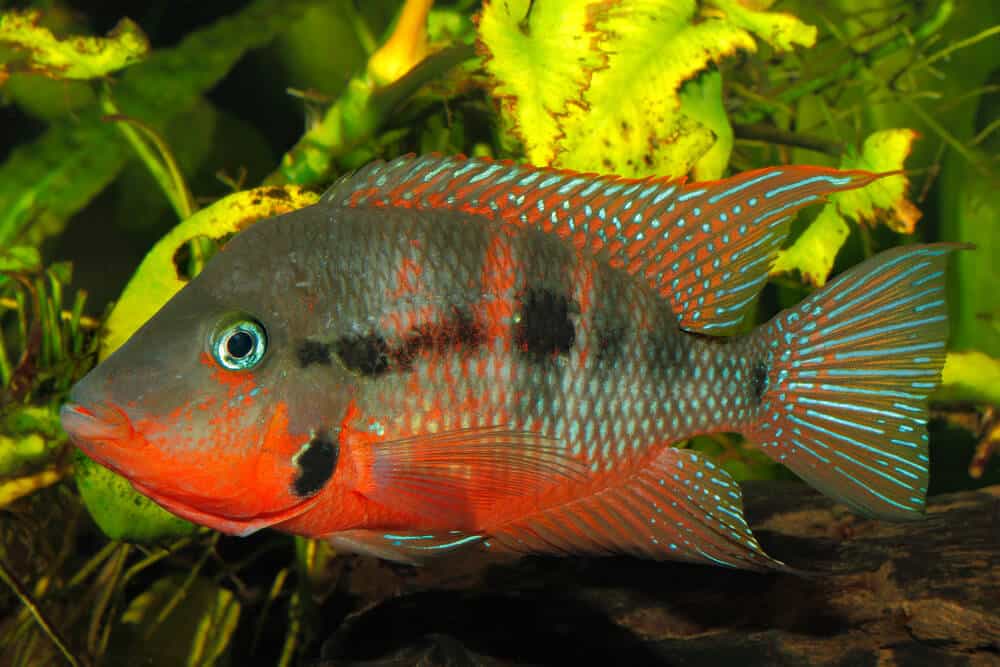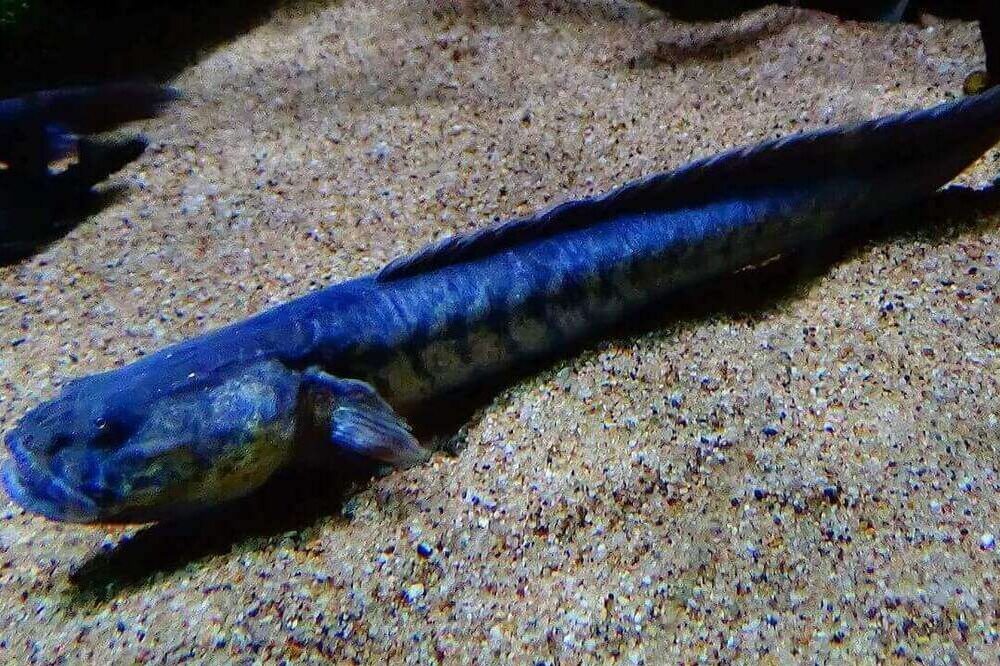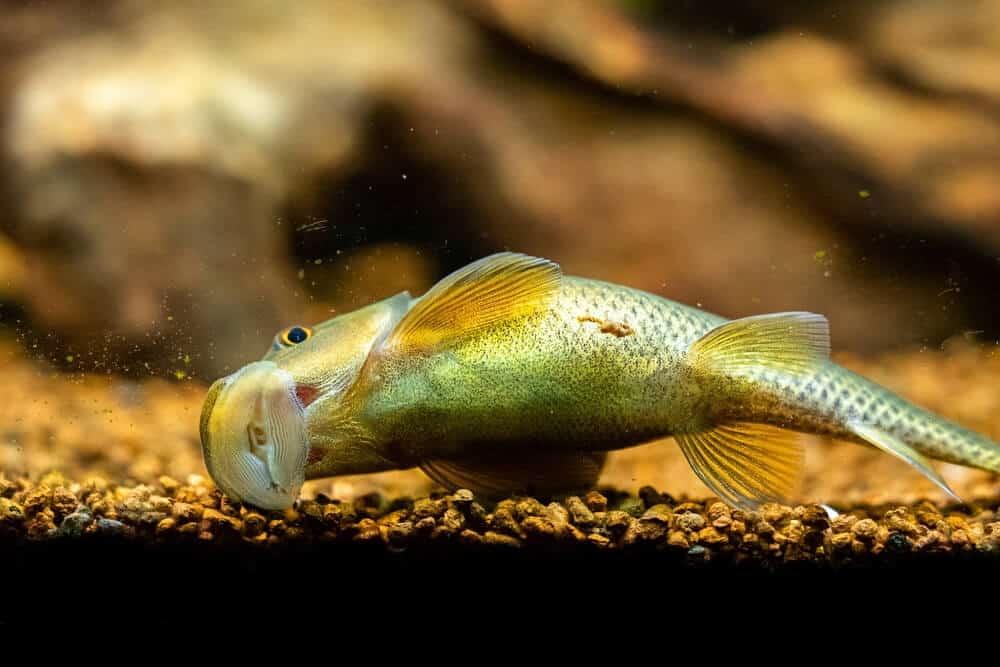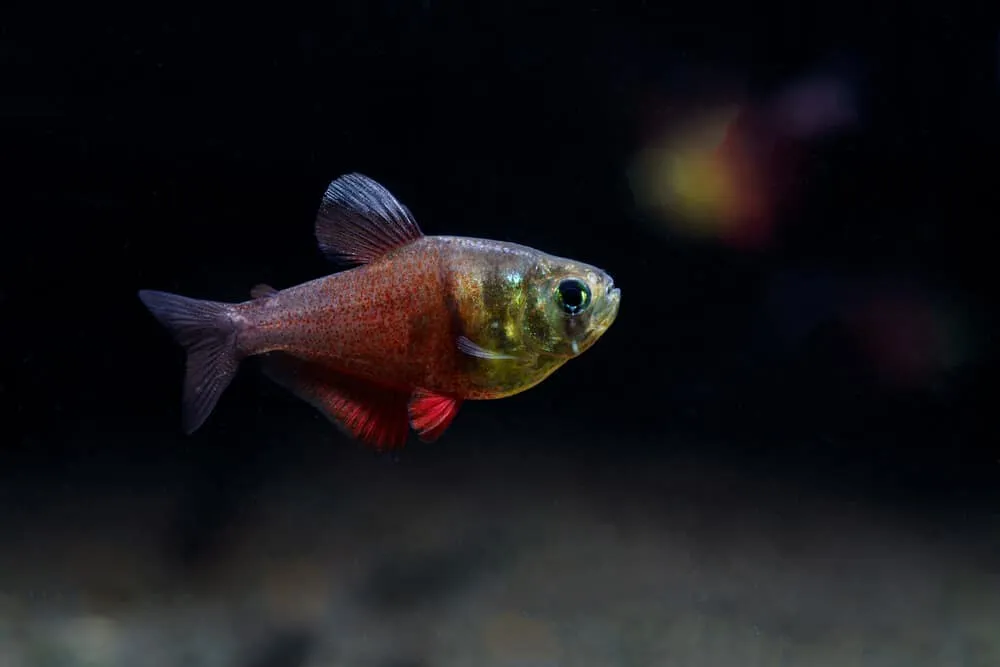A Detailed Guide On Blood Worms For Fish
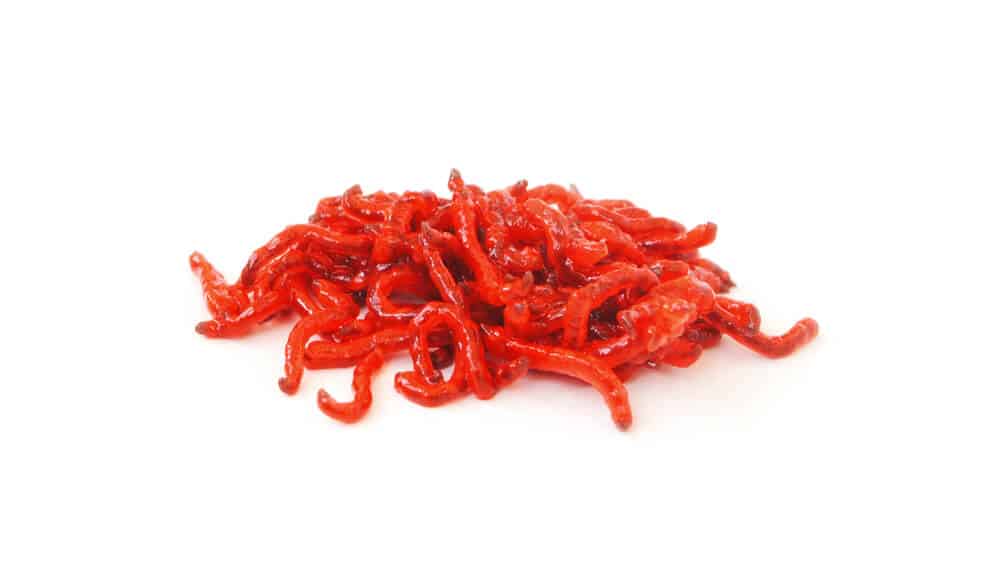
Bloodworms are a great addition to your aquarium and mostly used to feed fish pet. They are a type of larvae with a bright red color and are mostly found in shallow waters and freshwater.
They are carnivorous and are a vital part of any aquatic because of their high protein content and low-fat content. But with so many types of bloodworms, it can be overwhelming to decide the best one for your fish species.
This article covers the basics of blood worms for fish to help you make an informed decision about how you can use them in your aquarium. Here, you will also learn how they breed and how to maintain them.
Read on and find the nitty-gritty of blood worms for fish.
Bloodworms Overview
Bloodworms are a staple food for many fish. Bloodworm larvae are extremely nutritious and contain a high proportion of protein, making them an excellent food option.
In fact, many aquarium hobbyists swear by them as one of the most important foods for fish. They are especially popular with bettas and other small fish.
Blood worms are tiny aquatic invertebrates that have a brown color and can be found in almost any type of water. The bloodworm’s main purpose is to feed on bacteria and not on other creatures like it would in its natural habitat.
This means that they can be used as a supplement for aquariums where there aren’t enough bacteria present to support full-sized fish.
Bloodworms are available in a variety of shapes and sizes, ranging from large adult worms to small larvae. They can be purchased online or from fish shops.
The most common type of bloodworm is the flatworm which, looks similar to a piece of ribbon with two holes in it. There are also other varieties such as spiral worms, bumpy worms, and even fat worms.
Where Do Bloodworms Come From?
Bloodworms have become a popular food choice for most freshwater fish throughout the world. They are mostly found in freshwater ponds and pools, specifically on the northeast coast of America.
In most cases, they originate from New Jersey, Maine, and Connecticut. Besides freshwater pools and ponds, they are also prevalent in polluted water that has low oxygen levels. This is due to their high hemoglobin content.
Types Of Bloodworms
There are two primary types of blood worms. They include:
1. Bloodworm Larvae From Midge Flies
The small red larvae are the most common type of blood worm. These small red worms have a reddish color to them, making them easy to spot when they’re swimming in your tank.
The name “blood worm” comes from their red color which is caused by hemoglobin in their bodies. Unlike other species of crustaceans, bloodworms do not have legs or claws.
Instead, they have only small tubes called gills, which they use for breathing and are located on either side of their bodies near where they attach themselves to plants or rocks.
Blood Worms come from the family Chironomidae which includes other popular types of red wigglers like sand fleas and daphnia. They are small worms that can grow up to an inch long with a white head and body.
Since these bloodworms have no legs, they crawl around by using their mouth parts to feed on algae and bacteria.
These red worms are a great addition to your aquarium to help with the nitrogen cycle. They can be used in any size aquarium but they are best used in tanks that have been established for at least a few months.
2. Genus Glycera Blood Worms
The genus Glycera is a group of small, deep-sea hydrozoans that are pelagic, meaning that they live at the surface of the water and have no permanent attachment to any surface. Most species have a single row of tentacles surrounding a central mouth.
Nevertheless, some have two rows of tentacles. Many species also have a pair of tentacles called rhopalia that can be retracted into the body during feeding.
Glycera blood worms are among the most common species found in marine water aquariums around the world. The fleshy exterior (dermis) is transparent and may have red or pink colors when fresh, but these colors fade with age or when exposed to light.
Glycera blood worms are used as a food source for fish. There are different types of copepods, but these are the most popular among aquarists because they are easy to raise and breed.
Different Kinds Of Bloodworms
There are many different kinds of blood worms for fish that you can use in your aquarium. They include live bloodworms, frozen bloodworms, and freeze-dried bloodworms.
1. Live Bloodworms
Live bloodworms are a great way to introduce your fish to the benefits of live foods. Live bloodworms have been grown in captivity, so they do not have any harmful chemicals or additives added to them.
The downside to this type of bloodworm is that they are more expensive than other types of worms and can be hard to find sometimes. However, if you want to raise live bloodworms for fish, it’s quite simple.
All you need is a tank and some gravel (or sand) and a small amount of water. You can also buy these worms online if you don’t feel like doing it yourself.
Live bloodworms are easier for your fish to digest than frozen bloodworms. This means they will be digested at a faster rate and you can skip feeding an extended amount of time between feedings.
2. Frozen Bloodworms
Frozen bloodworm is a great alternative to live bloodworm. It is inexpensive and comes in a convenient package that you can keep on hand at all times.
Frozen bloodworms are usually sold in one-pound packages and are available in the freezer section of your local grocery store. You simply thaw out the frozen bloodworms in the refrigerator overnight and then add them to your aquarium for use as food for your fish.
Frozen bloodworm has a much longer shelf life than live bloodworms. Hence, it’s a good choice if you’re planning on adding new fish to your tank or if you have some sick fish that need to be treated quickly with medication.
The main disadvantage of frozen bloodworms for fish is that it tends to be less nutritious than live bloodworms. For this reason, we recommend using them only when there isn’t time for you to buy fresh live ones.
Alternatively, you can boil them before adding them to your tank. This allows them to absorb some of the nutrients.
3. Freeze Dried Bloodworms
Freeze-dried blood worms are usually made from various species of worms, and they can be used in both freshwater and saltwater aquariums. The worms are dehydrated and then freeze-dried, making them much more durable than regular frozen bloodworms.
These freeze-dried bloodworms have been flash-frozen in liquid nitrogen so they retain all their nutritional value and taste just like fresh food. The only drawback with freeze-dried bloodworms is that they contain less protein than live bloodworms.
Hence, feeding them can cause some nutrient deficiencies in your aquarium. This is especially true if you don’t supplement appropriately with other foods such as algae wafers or spirulina tablets.
Freeze-dried blood worms can be added directly to the water or used as food for fish. They are also useful for feeding small fish if you want them to grow bigger and faster.
Which Fish Can You Feed Bloodworms To?
While bloodworms are very nutritious for fish, they are not suitable for every species. Some species of fish will not eat bloodworms unless they have been conditioned. Some fish species however enjoy the benefits of bloodworms.
Generally, bloodworms can be fed to almost any freshwater fish species, including freshwater angelfish, gouramis, guppies, and more. Here are some examples of fish that can benefit from eating bloodworms.
1. Betta Fish
Bloodworms are a nutritional staple for bettas of all ages, and they’re also a great choice for new bettas to keep in their community tanks. They’ll help your betta build up its immune system and be able to resist disease better.
Bloodworms come in a variety of sizes, so you can pick the size that fits your betta fish best. Smaller bloodworms have more protein, which makes them easier for your fish to digest.
However, if you feed too many small bloodworms, it will have less impact on your tank’s pH levels than if you fed larger ones.
2. Tetras
Tetras are one of the most popular fish, and they do well in a variety of aquarium setups. They can be kept as single fish or in groups, but they do best when kept with other tetras.
Tetras are small fish, generally less than 3 inches long. They have long dorsal and anal fins that make them look like eels or snakes. The adult males have brightly colored bellies that are often tipped with black spots.
Tetras are omnivores and will eat anything that can fit into its mouth, including plants and flakes. However, bloodworms are an excellent source of protein for these little fish.
3. Gouramis
Gouramis are a type of fish that can be fed bloodworms. Gouramis are small, peaceful, and easy to care for. They do not get too big and can be kept in any type of aquarium.
They eat live food like bloodworms or brine shrimp, but they also love fresh vegetables. Plus, they are great beginner fish because they don’t require much care or treatment.
4. Angel Fish
Bloodworms are an excellent food for angel fish. Usually, Angelfish are aggressive and will eat anything that swims by.
This fish is one of the most popular fish for beginning aquarists since it requires minimal care and is relatively hardy. While bloodworms can be fed to angel fish, it’s important to remember that bloodworms are not like other foods you feed your fish.
They are more like a treat than a regular meal. So, you feed your angel fish properly so it does not suffer any poor water conditions.
5. Mollies
Mollies are the most popular fish in the aquarium hobby. They grow fast, they’re colorful and they make a lot of noise. Bloodworms are beneficial to any freshwater fish and mollies are no exception.
Feeding these freshwater fish with blood worms helps to get them to their ideal weight. Nevertheless, it’s important to know how many bloodworms your molly needs to get to their ideal weight.
6. Guppies
Guppies are one of the most popular aquarium fish species. They are known for their bright colors, friendly personalities, and small size.
Many people don’t realize that guppies can be fed bloodworms alone or mixed with other types of food such as flakes. When mixed with other foods, it is important to make sure that the bloodworms are not too large or too small because this can cause health issues with your fish.
The best way to feed bloodworms to guppies is by using a feeding stick that has a hole at the top which allows you to place the bloodworms directly into your tank’s water column and not directly on top of the gravel.
Breeding Your Own Bloodworms
Bloodworms are one of the easiest ways to start breeding your own. The breeding process is pretty simple, but there are a few important things to remember. If you don’t follow these steps carefully, you’ll end up with a lot of dead bloodworms and no larvae to feed your fish.
First Batch Of Bloodworms
The best time of year to collect blood worms for fish is during the spring and early summer when they are just starting to hatch out of their eggs. You can find them anywhere you see an abundance of freshwater masses.
To start breeding your bloodworms, you’ll need a container with plenty of space and good lighting conditions. A 10-gallon tank will do the trick, but if you have more room or more than one tank, go ahead and use it.
You can even set up an extra tank if you want to hatch some extra larvae at the same time. To breed them, mix various-sized bloodworms in the same container and let the eggs hatch out. In general, the best time to breed bloodworms is in the spring or early summer months.
In order for the eggs to hatch, there must be at least one adult male and one adult female present in the tank at all times. The adults should be large enough so that their bodies cannot fit through the mesh lid of your aquarium.
Bloodworms live anywhere from 2-8 weeks depending on temperature and water quality. However, if you keep them in good condition, they will live longer.
Feeding
You will also need some water and food for them to eat. We recommend getting a starter kit from a pet store or aquarium supply store, so you can get your hands on some food and water.
The best thing about getting a starter kit is that it comes with everything needed to get started. This includes all of the equipment needed, as well as instructions on how to feed them and what they should be fed.
There are usually several different types of food available in these kits, depending on what type of fish you are trying to raise. The most common ones are shrimp pellets, brine shrimp eggs, and bloodworm eggs.
How To Keep Them Alive And Healthy
The best way to ensure that your bloodworms stay alive is by keeping them in an environment with constant water temperature and good aeration. You can also place them on the bottom of your tank and add gravel or sand on top so they don’t float away.
If you want to make sure they don’t dry out during their life cycle, then you should remove any dead worms from your tank every few days. This way, they won’t foul up the water quality too much while they’re still alive.
Where Can You Buy Live Bloodworm?
If you want to buy live blood worms for fish, you can find them at the pet store. The best time to buy them is when they are in season, during the summer months.
While they are available year-round, they may be more expensive during other times.
Additionally, you can get frozen bloodworm online. You can purchase them from a variety of websites that specialize in selling fish food and aquarium supplies. These sites will have a variety of different sizes and shapes so that you can find a suitable product for your needs.
You may also be able to find live bloodworms in specialty stores such as pet supply stores or fish markets. If these stores have a large selection of fish food products, they may carry live bloodworms as well as other types of fish food products like pellets and flakes.
Frequently Asked Questions
What Do Bloodworms Eat?
Bloodworms are omnivorous crustaceans that consume both plant matter and animal protein. They will eat anything from algae to meaty foods like blood worms, but they prefer meaty foods such as spirulina and daphnia (a type of water flea).
Do Bloodworms Bite Humans?
Bloodworms are not aggressive and will not bite humans. However, they can be very messy if you don’t store them properly. If left in water for too long, the bloodworms will release a cloud of dust that can be dangerous to people with asthma or allergies.
Where Do Bloodworms Live?
Bloodworms live in fresh water and will not survive long at room temperature. They need to be kept at temperatures between 70 to 80 degrees Fahrenheit (21-27 degrees Celsius) as they grow.
If they are allowed to warm up, they will die within a few days after reaching adulthood.
Is The Frozen Version Of Bloodworms Safe?
Bloodworms are sold in several forms: live, frozen, and freeze-dried. While the frozen version is popular because it’s easy to transport and store, it does not provide the same nutritional value as live bloodworms.
Can Bloodworms Live In Soil?
Bloodworms are not meant to be kept in soil. They are a type of freshwater vermiparasite and will only survive in water. They are filter feeders and need to stay in the water. For this reason, they are most likely to die if they dry out too much or get too little oxygen.
How Fast Do Bloodworms Grow?
Bloodworms grow very fast and can reach lengths of 2-3 inches within a few days. They can grow up to 4 times their size in the first few days of hatching.
The size of bloodworms depends on the size of the container they’re kept in. The bigger the container, the bigger it will get.
Can You Grow Your Own Bloodworms?
You can grow your bloodworms, but it’s not a simple process. You’ll need to buy the appropriate species and culture them and then use them in your fish tank or aquarium.
You can also purchase bloodworms in pet stores or online, although this may be a bit expensive. Hence, it is a great thing to grow your own if you can afford it.
Do Bloodworms Turn Into Flies?
Yes, bloodworms turn into flies. The bloodworm is a small, segmented worm that is usually pink or red. When the bloodworm is ready to turn into a fly, it will start to swell up and look like it has been inflated with air.
On average, the time that it takes for a bloodworm to turn into a fly varies from one hour to one day.
How Big Do Bloodworms Get?
Bloodworms grow up to 3 inches long and will get much bigger than this when kept in ideal conditions. However, they typically grow more slowly than other types of worms do and may not reach their full size.
When feeding bloodworms to your fish, you should try to keep them as small as possible. This will make it easier for your fish to eat them without getting sick or dying from being unable to digest them properly.
Final Thoughts
While bloodworms might seem gross to the average human, they are one of the best food sources for your fish that you can offer. Bloodworms contain both protein and fat and are an excellent choice if you are looking to feed your fish some kind of supplement to help them grow.
Bloodworms are readily available at most pet stores, although they can be pricey, depending on where you get them. The best thing, though, is that you catch your own bloodworms with a little bit of effort and energy.
Catching bloodworms is easy and there is no need for fancy or expensive equipment. Start simple and expand with time.
